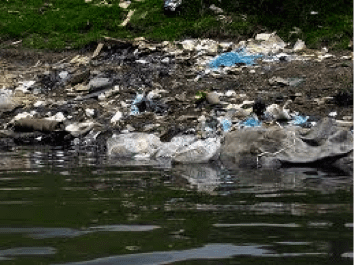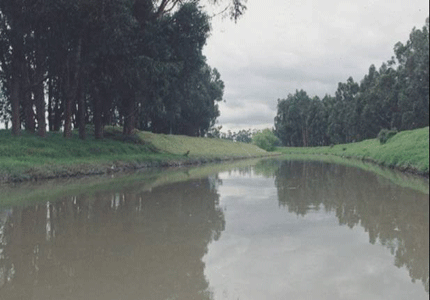Native name Río Bogotá Length 375 km Source Páramo de Guacheneque | Other name(s) Funza River Source elevation 2,300 m | |
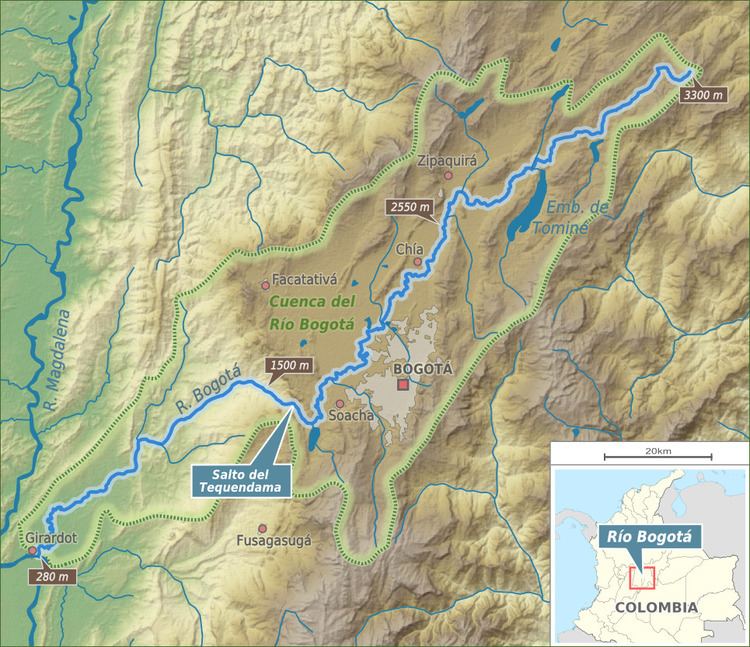 | ||
Main source Guacheneque PáramoVillapinzón3,300 m (10,800 ft) | ||
The Bogotá River is a major river of the Cundinamarca department of Colombia, crossing the region from the northeast to the southwest and passing along the western limits of Bogotá. The large population and major industrial base in its watershed have resulted in extremely severe pollution problems for the river.
Contents
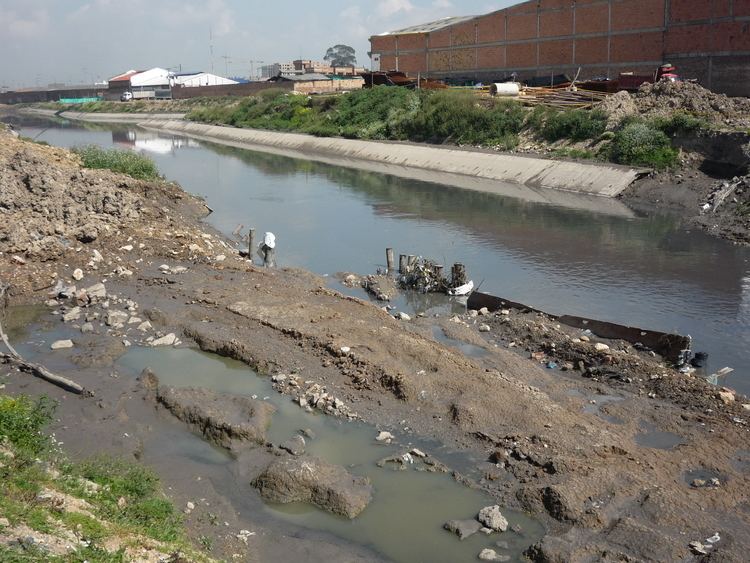
Etymology
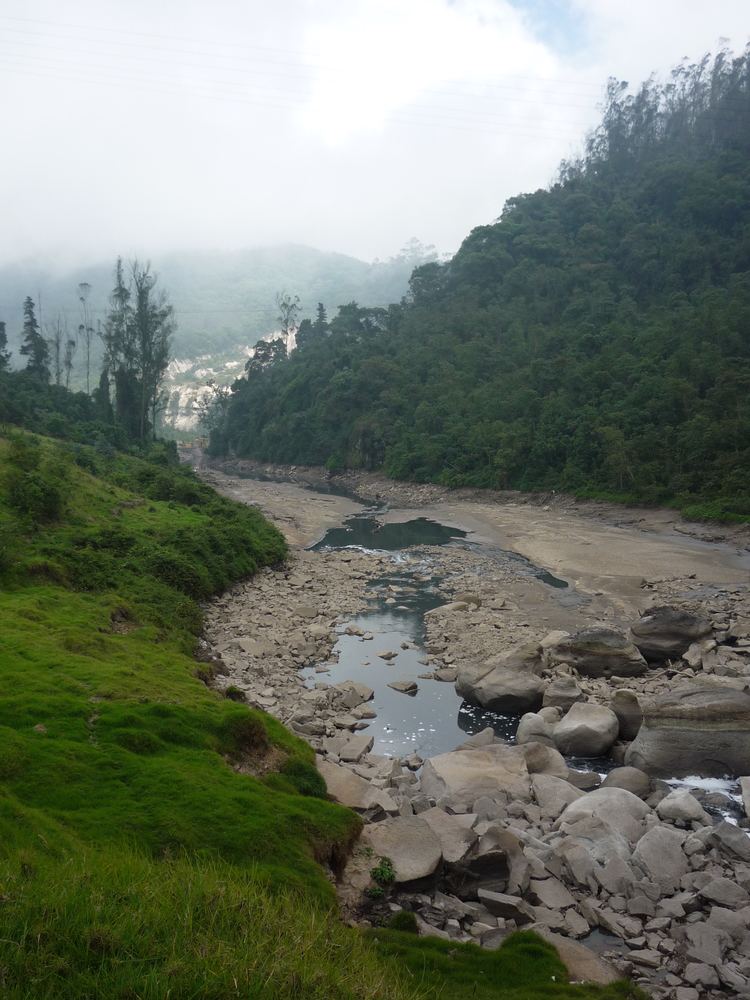
The Bogotá River is named after Bogotá, which is derived from Chibcha and means "(Enclosure) outside of the farm fields". In historical texts, and today the upstream part of, the Bogotá River is also called Funza River.
Course
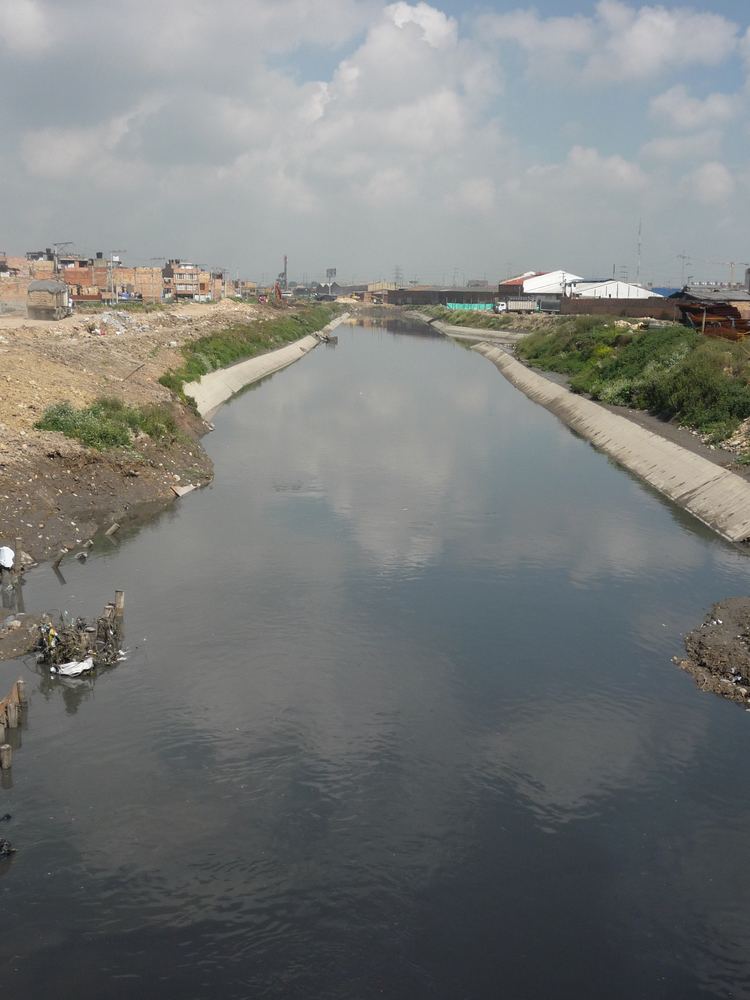
Main tributaries of the Bogotá River are the Teusacá, Juan Amarillo, Fucha, Tunjuelo, Soacha (left) and Neusa, Río Frío, Bojacá and Subachoque Rivers (right).
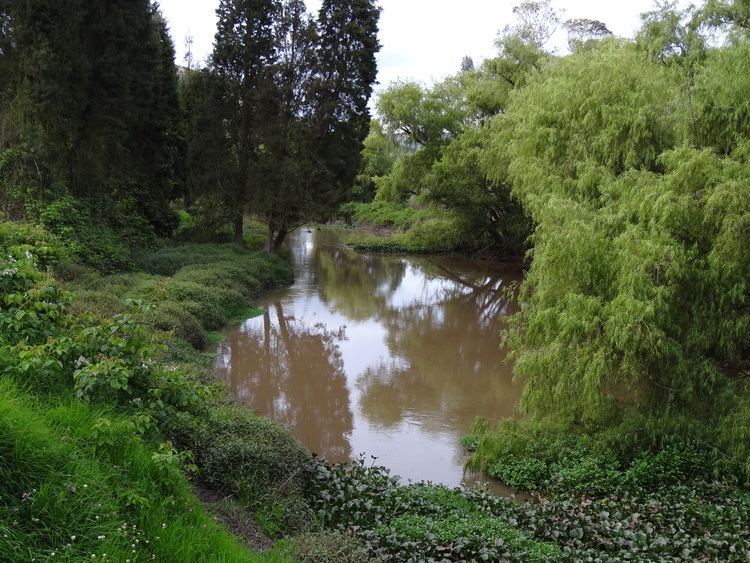
The headwaters of the Bogotá River are in the municipality of Villapinzón, in the northeastern part of Cundinamarca near the limits with Boyacá. It has a course of about 150 kilometres (93 mi) as it crosses the Bogotá savanna, passing through Zipaquirá and eleven small municipalities, before reaching the city of Bogotá. As it runs along the western border of the city, the river forms the outlet for the heavily polluted Salitre, Funza and Tunjuelito Rivers. After passing through the municipality of Soacha, the Bogotá River plunges off the savanna at the Tequendama Falls. It then follows a steep course, falling about 2,000 metres (6,600 ft) in 50 kilometres (31 mi), to join the Magdalena River at Girardot.
Temperature
The temperature average ranges from 24 to 27 °C (75 to 81 °F).
